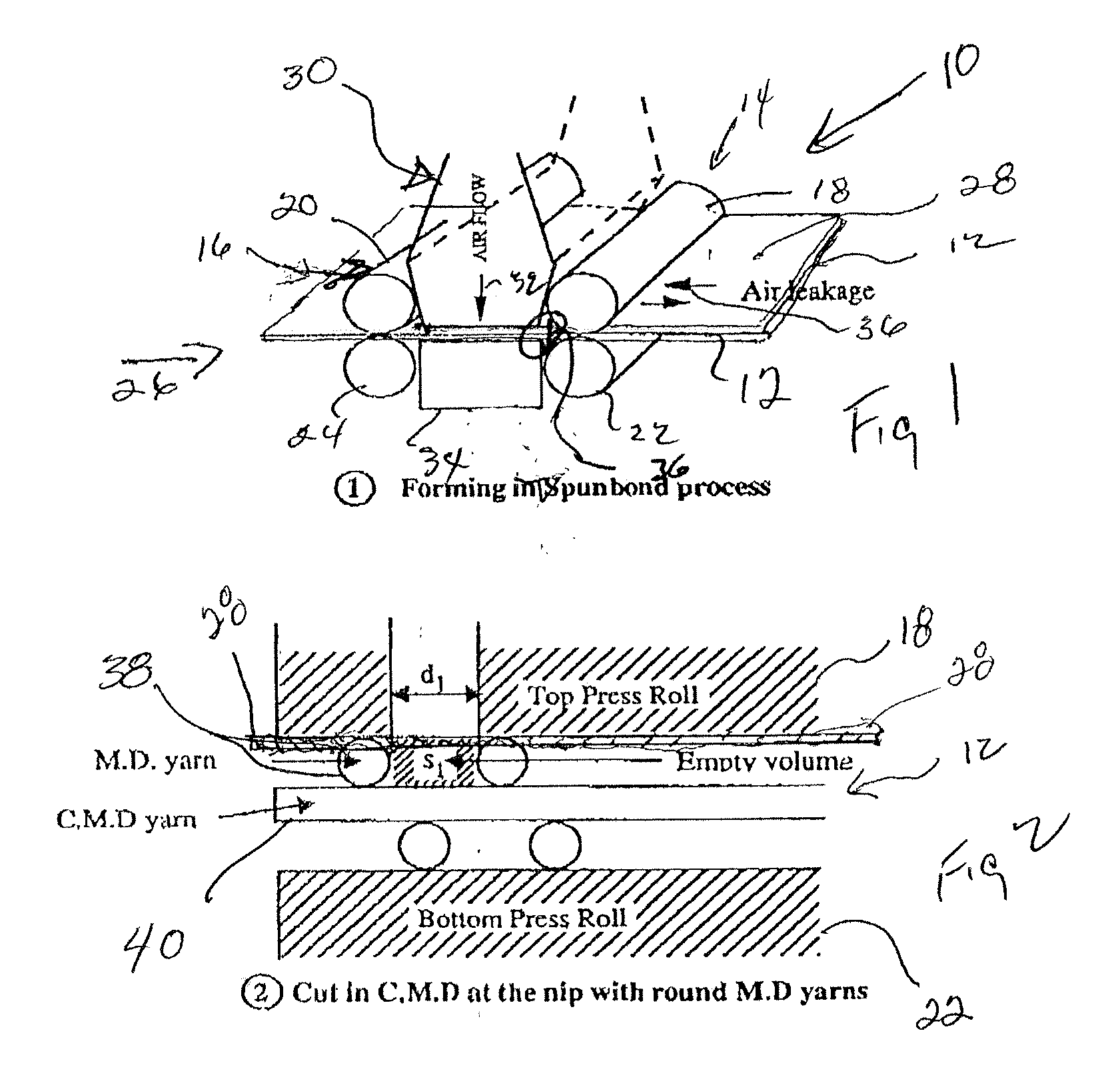Fabric Comprising Shaped Conductive Monofilament Used in the Production of Non-Woven Fabrics
a technology of conductive monofilament and fabric, which is applied in the direction of weaving, manufacturing tools, coatings, etc., can solve the problems of undetected disturbance of the formation of the web, web flutter, air leakage between, etc., to minimize or eliminate the flutter of the web, improve the fabric surface, and minimize the effect of air leakag
- Summary
- Abstract
- Description
- Claims
- Application Information
AI Technical Summary
Benefits of technology
Problems solved by technology
Method used
Image
Examples
Embodiment Construction
[0022]Turning now more particularly to the figures where like elements will be similarly numbered, FIG. 1 shows schematically an apparatus 10 for forming a non-woven web, structure or article. The apparatus 10 is part of a melt-bond forming machine which forms a flat web or non-woven web, structure or article by a process other than weaving. Non-woven webs, structures or articles typically comprise fibers or filaments bonded together. In general, spun-bonding involves molten polymer which is extruded from a spinning head or spinneret which produces a curtain of strands. Illustrative of such an apparatus is that set forth in U.S. Pat. No. 5,814,349. A high flow of air is used to aerodynamically stretch, elongate or attenuate the strands which, after passing through a diffuser, are deposited on a forming fabric 12. Presses are used to compress the deposit of filaments. As shown, by way of example, there are two presses, a downstream press 14 and an upstream press 16 each of which has ...
PUM
| Property | Measurement | Unit |
|---|---|---|
| surface roughness | aaaaa | aaaaa |
| thickness | aaaaa | aaaaa |
| permeability | aaaaa | aaaaa |
Abstract
Description
Claims
Application Information
 Login to View More
Login to View More - R&D
- Intellectual Property
- Life Sciences
- Materials
- Tech Scout
- Unparalleled Data Quality
- Higher Quality Content
- 60% Fewer Hallucinations
Browse by: Latest US Patents, China's latest patents, Technical Efficacy Thesaurus, Application Domain, Technology Topic, Popular Technical Reports.
© 2025 PatSnap. All rights reserved.Legal|Privacy policy|Modern Slavery Act Transparency Statement|Sitemap|About US| Contact US: help@patsnap.com



